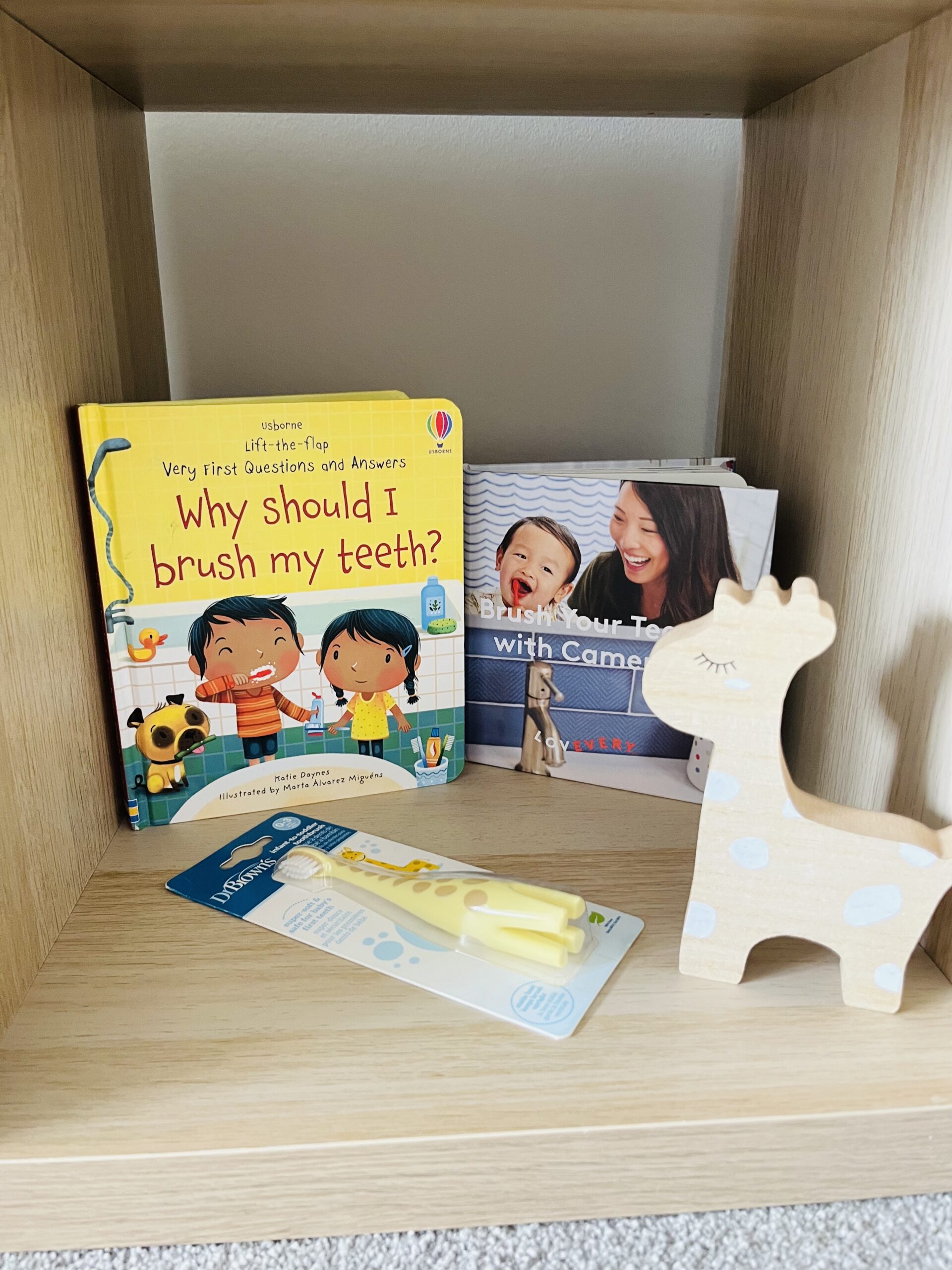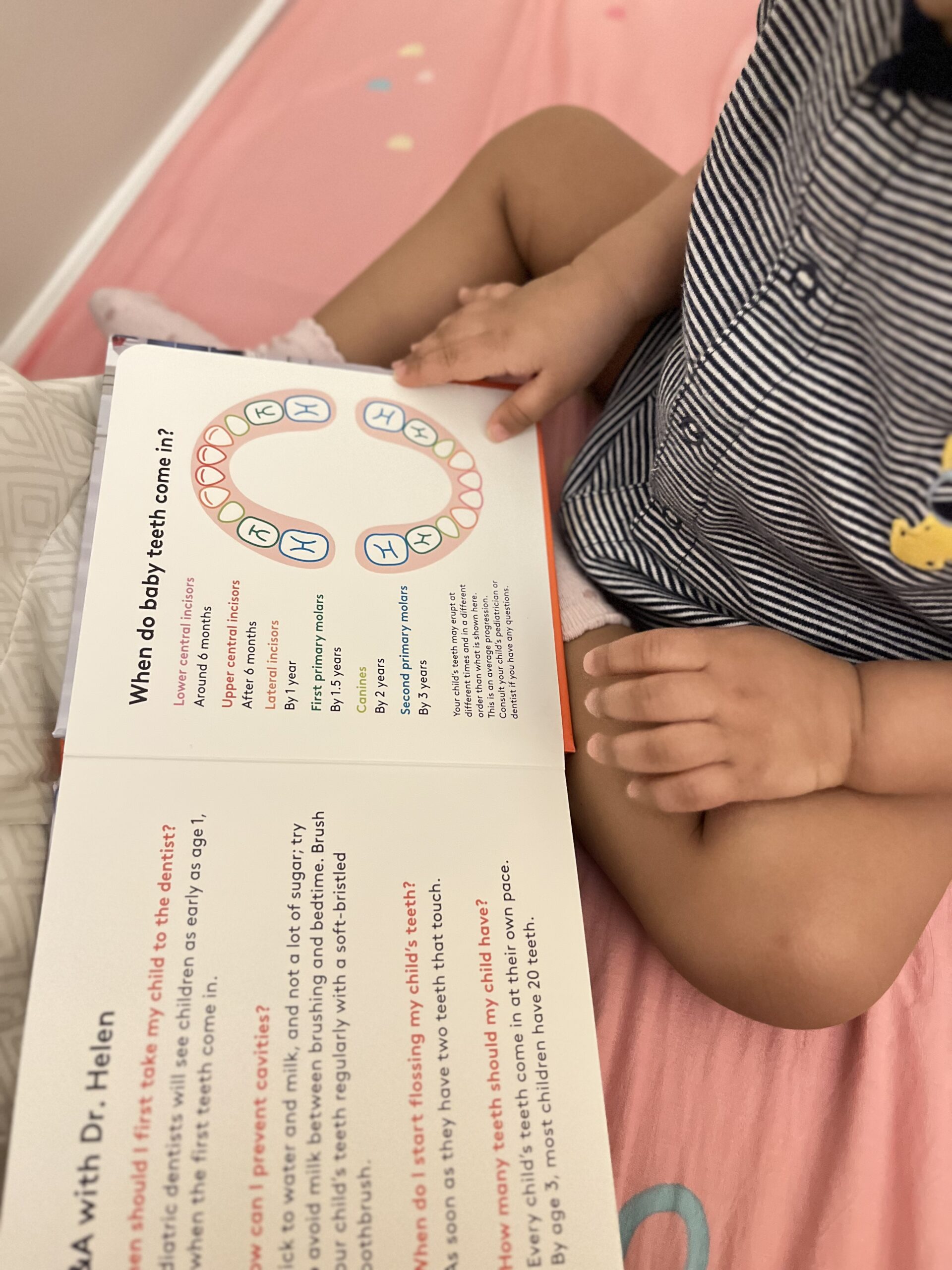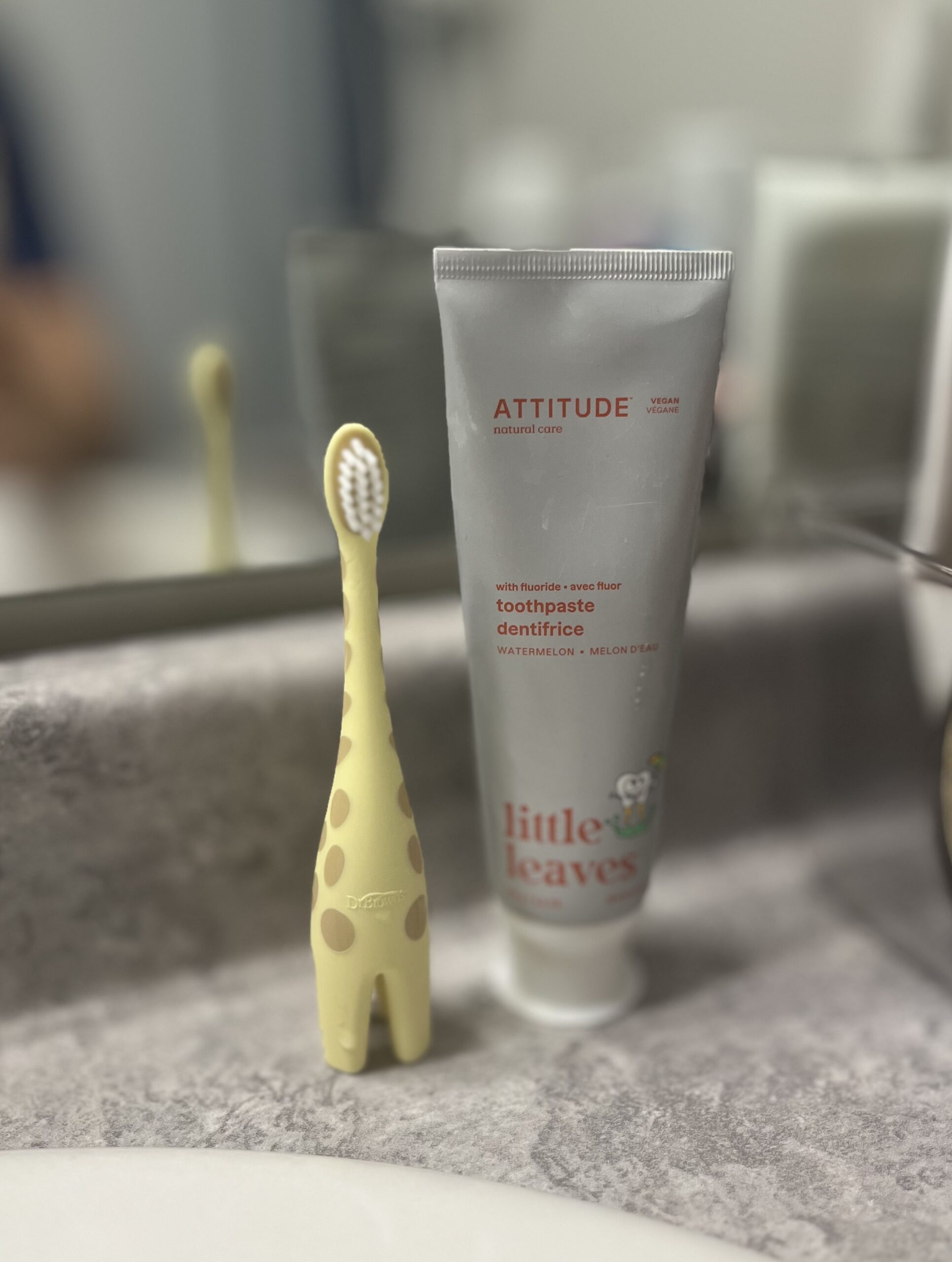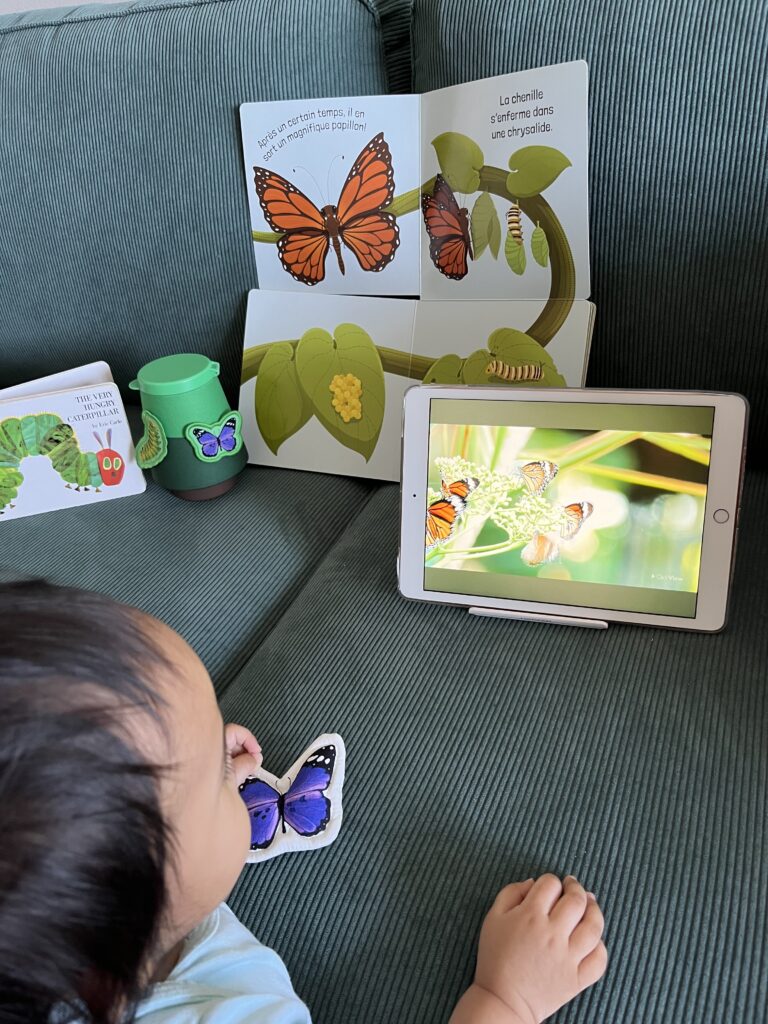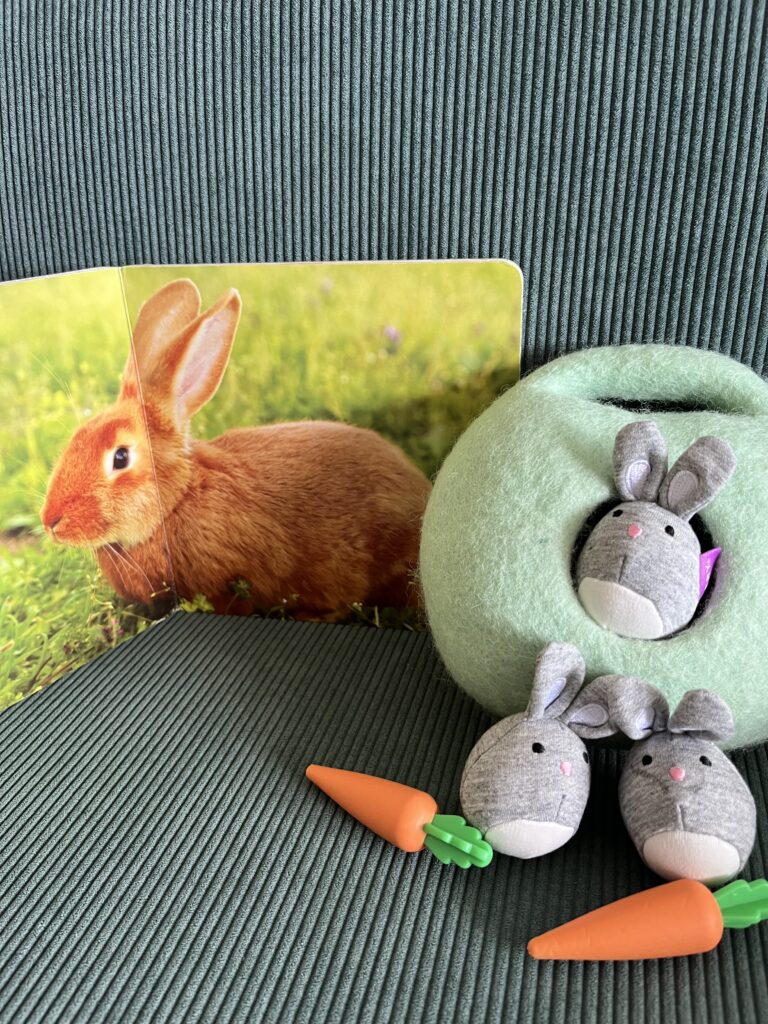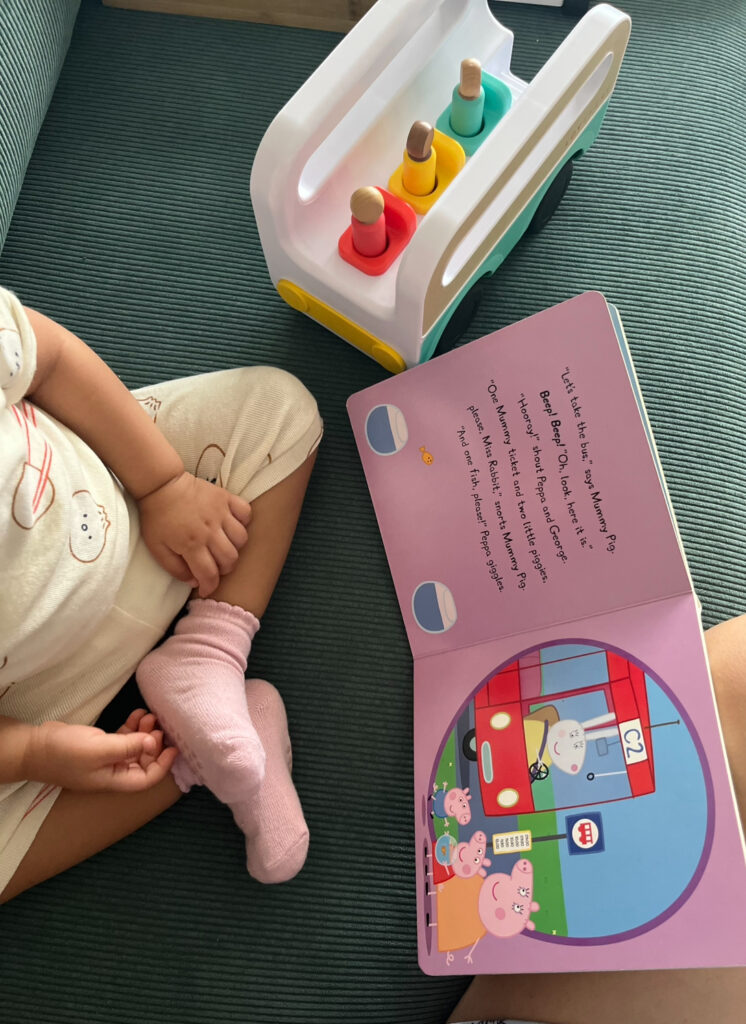Introduce the habit of brushing one’s teeth in a fun way with this simple play plan involving stories, songs, and a sense of ownership with their first toddler toothbrush.
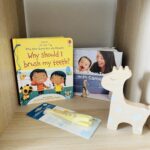
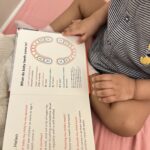
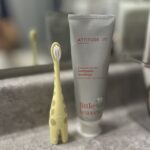
Who knew learning to brush your teeth could be so fun?
About This Play Plan:
Brushing teeth can be tricky at this age, but it doesn’t have to be a struggle. This play plan introduces the idea of oral hygiene in a gentle, playful way using songs, books, videos, and a real toothbrush. It helps your toddler build positive associations with brushing, see it as part of their daily routine, and begin to understand why it matters, without pressure.
According to the Canadian Dental Association, toddlers need help brushing their teeth because they lack the coordination to do it effectively on their own. Parents should use a soft, age-appropriate toothbrush and begin brushing as soon as the first teeth appear.
For children under 3 who are at risk of cavities, a tiny smear of fluoridated toothpaste (about the size of a grain of rice) is recommended. This small amount offers protection against tooth decay while minimizing the risk of fluorosis from swallowing fluoride. Children who are at risk are those who consume foods containing carbohydrates (sugars and starches), including milk, bread, and fruit.
If the child is at low risk, brushing with fluoride-free toothpaste or just water is enough at first. Gentle, circular motions should be used to clean all surfaces, and brushing should be supervised until the child is old enough to write (not print) their name, typically a sign they’re ready to do a thorough job independently.
How to Use This Plan:
- Gather Your Materials: Check the list below for everything you’ll need.
- Follow the 5E Tabs: Each tab provides step-by-step guidance, creative ideas, and reflection prompts to make the experience more meaningful.
- Let Your Child Lead: Observe how your child interacts with the materials and adjust based on their interests and developmental stage.
Spark your child’s curiosity:
Start by reading a toddler-friendly book on brushing one’s teeth, such as Lovevery’s Brush Your Teeth With Cameron.
Read it together, pointing to Cameron’s toothbrush and teeth. Keep your tone playful and say things like, “Look! Cameron’s brushing his teeth!”
Encourage hands-on exploration:
Show them how you brush your own teeth to model the action.
Then let your toddler hold and examine their toothbrush.
When you’re ready to brush their teeth, use the same phrase to invite them each time, such as “Time to brush your teeth!”
Before brushing their teeth, show them how to apply the toothpaste (as big as a grain of rice). Then ask them to say “Aah” so you can brush the tops and back sides of their teeth.
After that, ask them to say “Eeh” so you can brush the front of their teeth.
Provide simple, age-appropriate explanations:
Use clear, simple words: “We brush to keep our teeth clean,” or “Toothbrush helps take away the food.”
Use a book like Why Should I Brush My Teeth or a toddler-friendly infographic to point out pictures of teeth and relate them to your child’s own mouth.
Expand on the activity:
Build a little routine: keep the toothbrush visible on the sink or a tray, and sing “Brush your teeth, brush your teeth…” together when it’s time.
Decide whether you should brush their teeth first before they can give it a go, or vice versa.
If your child resists brushing, try different approaches:
- Model brushing on a toy: “Let’s brush Teddy’s teeth first!” then let them copy the motion on themselves.
- Sing along with a playful tune like Barney’s “Brushing My Teeth” or your own short brushing jingle.
- Watch a video of other toddlers or kids brushing their teeth so they can see peers doing it.
- Use a mirror and brush your own teeth beside them, they may be more likely to mimic you.
- Offer choice: “Do you want the red toothbrush or the yellow toothbrush?”
The goal is to keep the experience light, positive, and pressure-free while making brushing part of the daily rhythm.
Reflect on how your child responded to the play:
- Did they show interest in the toothbrush?
- Did they try to mimic brushing motions?
- Were they curious about the images or characters brushing their teeth in the books or video?
- Did they engage more when music was playing?
- Have they started to anticipate brushing during routine times?
Reinforce brushing as part of daily life. Add a little visual cue, like a brushing chart or a song cue, to signal that it’s time.
Materials List:
- Toddler-friendly books on how to brush your teeth, such as Lovevery’s Brush Your Teeth With Cameron
- A toothbrush for infants (We love Dr. Brown’s infant-to-toddler toothbrush)
- A baby-friendly toothpaste (We use Attitude’s Little Leaves Toothpaste with Fluoride)
- Optional: A song on brushing one’s teeth, such as Barney’s “Brushing My Teeth”
Tips for the Grown-Ups:
Follow the Child’s Lead:
Observe how your child interacts with the playthings. Let them guide the session by following their interests. If they show a preference for exploring textures, sounds, or colors, embrace it. Be a silent observer, ready to expand their learning with gentle, supportive language.
Create a Calm, Inviting Space:
Set up a clutter-free area that encourages focused exploration. Use natural light and simple setups to inspire curiosity. If the weather permits, take the play outside for a richer sensory experience, connecting with the natural world.
Encourage Open-Ended Play:
Embrace imaginative twists and unexpected uses for the toys. If the activity takes a surprising turn, celebrate this as a sign of growing cognitive flexibility and problem-solving.
Our Own Play Experience
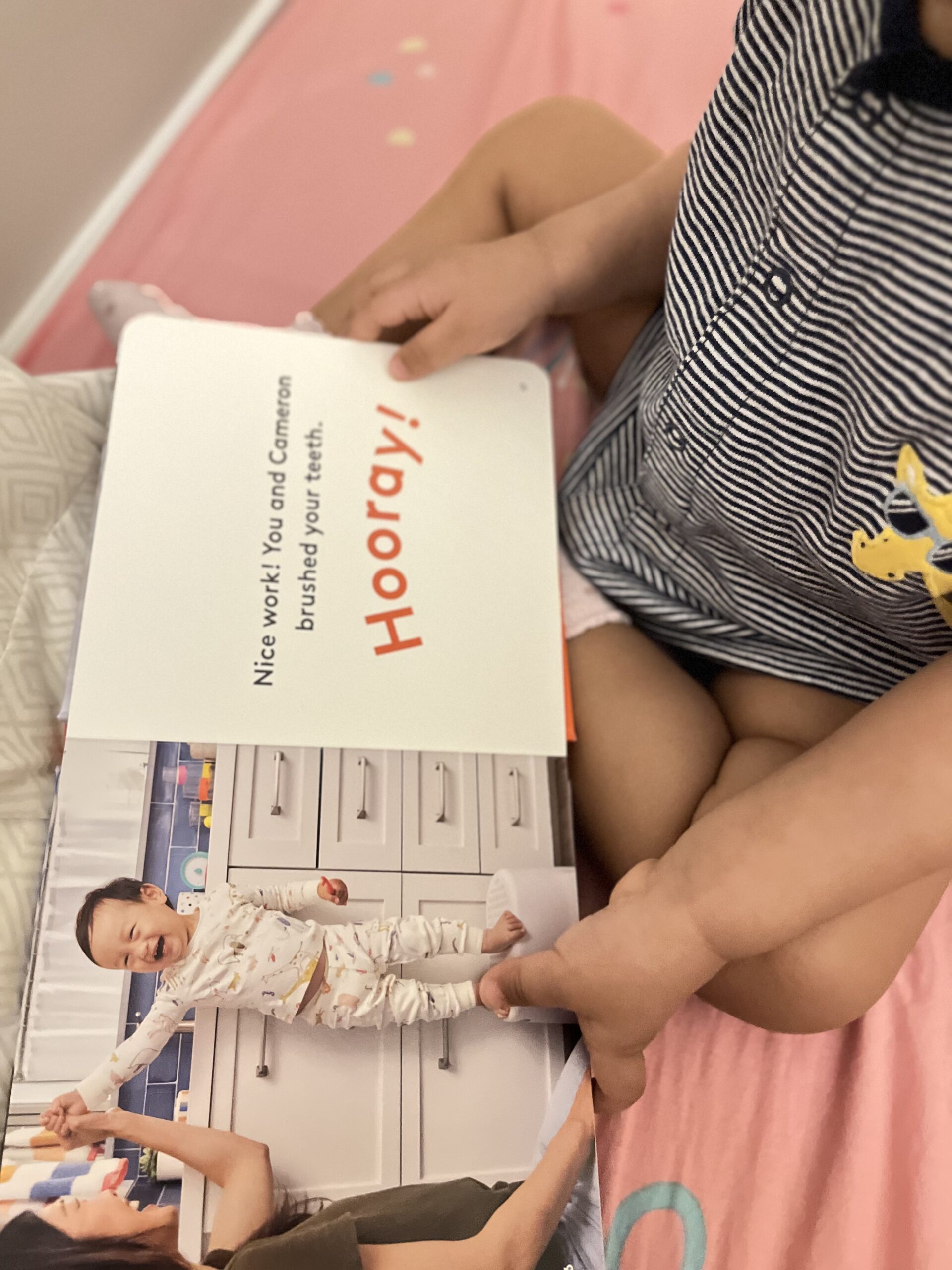
When our toddler was still a baby, we used to brush her gums and little teeth with the Haakaa silicone baby finger toothbrush. However, as more teeth emerged around 15 months, and her molars began to erupt, we decided to transition to a traditional toothbrush.
We’d been reading Brush Your Teeth With Cameron and Why Should I Brush My Teeth board books to her weeks before the transition. We would model saying “Ah” and “Eeh” when brushing our teeth.
We would model saying “Ah” and “Eeh” while brushing, and although both my husband and I use electric toothbrushes, we made sure to also show her how to use a regular one by brushing alongside her.
When we finally handed her a toothbrush, she already seemed to understand what to do. We decided on a routine where we brush her teeth thoroughly first, then let her take a turn; this gives her a sense of ownership while still ensuring her teeth are cleaned properly.
We’ll continue brushing for her until she’s old enough to write, which is the age experts say kids are ready to brush effectively on their own.
Please Note: I am a proud Lovevery subscriber and fan, and many of the play plans shared here feature Lovevery playthings. However, this site is not affiliated with or endorsed by Lovevery. All ideas and recommendations are my own, based on my experiences as a mom who values meaningful, play-based learning.
Share this play plan:

